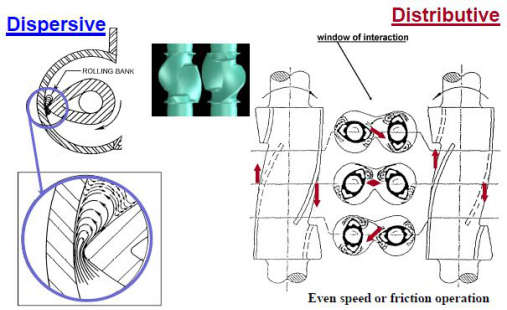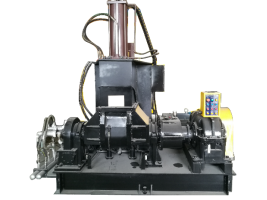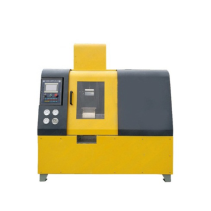Q: How many brake pads are there? A: 5 kinds, according to the material are asbestos, non-asbestos (NAO), semi-metal sintered (SEMI-me taLLIC), metal sintered (MMC), composite material (CONSTITUENT). Asbestos will produce toxic gases at high temperatures. Therefore, the domestic environmental protection agency stipulates that the production of asbestos brake pads should be completely banned in 2018; non-asbestos is mainly made of glass fiber, and the advantages of low cost and easy material acquisition are quite attractive to manufacturers. However, it is not resistant to high temperatures and is prone to heat exhaustion, which makes consumers deterred. In order to solve the problem of NAO, manufacturers have developed brake pads with composite materials , which are made of stronger materials such as KEVLAR, carbon fiber and ceramics. Braking force. Semi-metal sintering is made of metal and steel, copper fiber, which has better high temperature stability than non-asbestos, but the wear is relatively poor; metal sintering is made by metal powder through high temperature and high pressure sintering. Strong braking force, but the disc attack is relatively strong. When it is "ultra-high temperature", it is easy to produce carbides and the braking force is weakened. Q: Is there a sound that can be sprayed with WD-40 when braking ? A: Absolutely not! Lubricating WD-40 will penetrate into the brake pads, resulting in reduced brake performance and dangers during driving. Q: Is there a running-in period after changing the brake pads ? A: Yes. After replacing the new brake pad, it takes a period of running-in, but it does not mean that there is no braking force during the running-in, but the braking force after running-in can reach 100%. Q: After changing the brake pads , the tires will not move. Is this normal? A: Not normal. After replacing the new brake pad , if the tire does not move by hand, or it is very strong to turn a little, it means that the brake pad has bitten the disc. The solution is to clean the caliper piston and push it to the bottom to reload the brake pads . Can be solved! Q: What does “HH†on the brake pad package mean? A: Represents a coefficient of friction greater than 0.55 at an operating temperature of 0-680 °C. The coefficient of friction coefficient is divided into eight steps from EE, EF, FE, FF, FG, GF, GG, HH from low to high. The first letter represents the friction coefficient at room temperature (0-250 ° C), and the second letter represents The friction coefficient of high temperature (250-680 °C), the friction coefficient of each letter is: E=0.25≦μ≦0.35, F=0.35≦μ≦0.45, G=0.45≦μ≦0.55, H=μ≧0.55. Q: Why do brakes often soften when going downhill ? A: The brake pads are in thermal decline. Some Knight downhill, in order to maintain the vehicle speed, brake mouth customary way down, because of the frictional heat, brake pads at the same time, will produce a lot of heat to provide a braking effect, though the working temperature increases will increase the braking force, However, when the maximum operating temperature is exceeded, a thermal decay occurs, resulting in a decrease in braking force. Q: How to reduce the phenomenon of thermal decay? A: Avoid pressing the brakes for a long time . Some knights will get used to placing their fingers on the brake lever, but they may inadvertently contain the brakes , causing a long time to press the brakes . Therefore, it is not recommended that the knight put the finger on the brake lever when riding, otherwise Pressing and releasing the brakes will allow the brake shoe to have enough time to dissipate heat. In addition, in order to solve the overheating problem, the manufacturer has also developed brake pads that can increase heat dissipation , such as the patented cymbal cooling groove design in the NCYHP series, adding pistons and hooves. The gap between the sheets is used for heat dissipation, and different materials are added to the brake shoes to increase the heat dissipation. For example, the surface of the GALFER 1375 brake pad is coated with ceramic material. Q: What is the function of the groove of the brake pad? A: Eliminate dust, increase heat dissipation, and facilitate identification. When the brake pad and the disc are rubbed, some dust will be generated. If it is attached to the disc, it will cause damage. Therefore , the groove is designed on the brake pad to facilitate the dust discharge and the function of the heat. In addition, Some grooves are designed as indicator lines, like the safety indicator line for tires , which means that the brake pads need to be replaced when the grooves are finished . Q: When should I change the brake pads ? A: Disc brake system the brake pads may be utilized to determine the trenches, to check whether a sufficient thickness or removed from the caliper; wheel brake system is difficult since the extraction may be utilized to determine the brake rocker knob, the knob can be easily adjusted, if in the end, and the brake use no brake force, on behalf of the replacement brake pads, the other can be replaced by opportunity tires, brake pads checked whether still enough. Q: How to maintain the brake pads in peacetime ? A: Brake cleaner. In order to prevent dust from adhering to the disc or brake pads , riders can purchase brake cleaners themselves . Simple cleaning and maintenance can ensure that the brake pads are working properly. Remember! Never use oil or lubricants . These ingredients will be absorbed by the brake pads , resulting in reduced brake performance and increased risk of driving! Sum up the above common sense, the next time you want to choose the brake pads , you can better understand the characteristics of each type of brake pad, according to the material, friction coefficient as the basis, choose the brake pad that suits you , in addition, there are special cleaning brakes on the market. cleaning agents, we should not use other chemical agents to clean, if you find that the brake pads need to be replaced, do not let petty wagon brake wear a little more, which will increase the risk when driving. LINA Tangential Dispersion Kneader Mixer
Tangential type is one of kneader mixer`s rotor types and it is different with intermeshing rotors. In kneader machines, the high shear force is formed in the space between the roof of the chamber wall, the rotor rib rotates the kneading material axially and radially, the materials are crushed and dispersed by the space between the rotor rib and the wall of the mixing chamber.
Specifications of LINA Tangential Dispersion Kneader
LN Dispersion Kneader
Type
Size
Dimension (mm)
Weight (kg)
LN-LAB TEST (LT) kneader
0.5
1600*900*1900
800
1
1600*900*1900
800
2
1600*900*2000
900
3
1600*900*2100
900
5
1900*1000*2100
1200
10
2200*1350*2150
2500
LN-Mass Production
15
2200*1350*2150
4000
20
2500*1450*2450
3800
25
2500*1500*2500
4500
35
3200*1900*3000
6500
55
3300*2000*3100
7800
75
3800*2300*3200
10800
110
4100*2300*3400
16500
Tangential Type Dispersion Kneader Tangential Type Dispersion Kneader,Tangential Type Banbury Kneader,Tangential Rotor Banbury Mixer LINA Machinery Industrial Co.,Ltd , http://www.linakneader.com



With the advancement of the craftsmanship, the engine horsepower has increased. In the era of speed pursuit, the brake system is particularly important. This time, we will talk about the important elements in the brake system: brake pads . Everyone knows that the brake system is divided into disc brakes and brake hub are two, but you know some tips brake pads do?